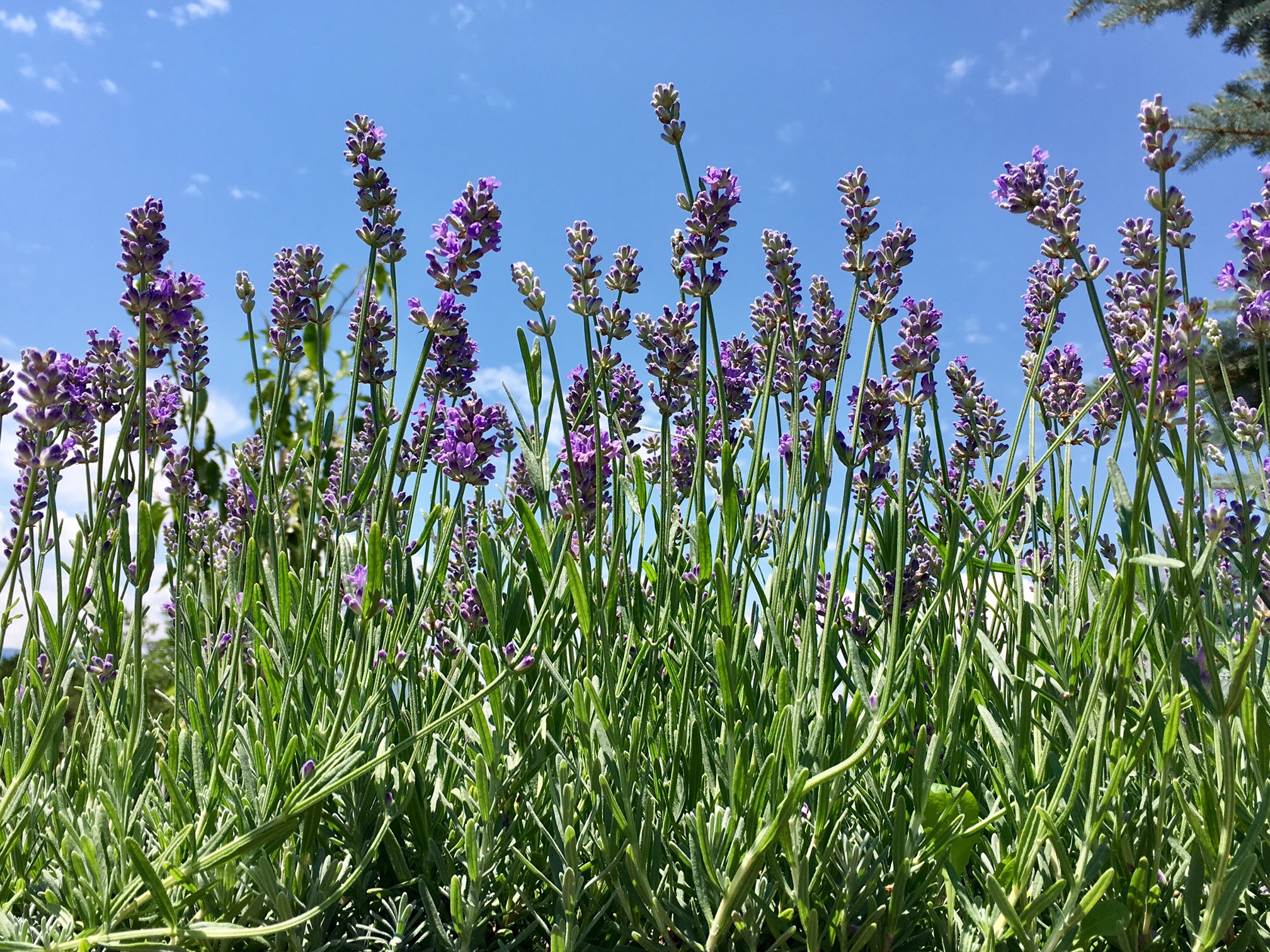Lavender is a terrific mid-season summer perennial in our Colorado climate. Loves the sun, the heat and a little opportunity to dry out in between irrigation applications. Enjoy the flowers and share with the pollinators. And/or harvest the flowers to create scented crafts.
Lavandula angustifolia is a small shrub native to the Mediterranean, despite its common name of “English lavender”. Lavender likes cool winters and hot, dry summers reminiscent of its native climate. It needs well-draining soil and full sun. Lavender is drought resistant and hardy to zone 5.
Different kinds of lavender
- English – L. angustifolia, most common garden perennial- Munstead, Hidcote, Super Blue
- French hybrid – L. x intermedia, perennial with long flower stems & great color- Phenomenal, Grosso, Sensational
- Spanish – L. stoechas, annual flowers with bunny ears (not hardy)
Soil preparation
- Good drainage – does not like wet feet
- Add compost – improves aeration and drainage
- Plant on mounds – improves drainage
Fertilizer
- No fertilizer
- Or low nitrogen – general purpose at a low rate
- 1x yearly
Irrigation
- Water from below – keep foliage dry to control diseases
- Every other day for 2 weeks after planting
- Once or twice per week after established
Pruning
Proper pruning helps to extend the life of the plant by promoting growth, branching, and blooming. Because lavender blooms on new stems, pruning early or late in the season will be most beneficial.
You can cut back up to one third of the plant at a time, taking care not to cut into the woody stems. Pruning new growth promotes more new growth, whereas cutting into the woody stems will just cause those stems to die without growing anything new. To keep the plant neat and tidy, lavender should be pruned three times throughout the season:
- Prune once in early spring just after the new growth appears,
- prune again in summer after the first bloom,
- and prune a third time in fall after the second round of flowers has finished.
You don’t have to prune all three times; you can do it only once or twice a season if you want the plant to grow more wild and leave the flowers for the bees, if that is your preference.
Harvest Flower Buds
Harvest lavender buds for crafts and recipes. If you time it right, pruning and harvesting can be the same thing, but they can also be very different. The purpose of pruning is to maintain the shape of the plant, while harvesting is the act of removing the flower buds for another use.
Harvest lavender stems for the colorful buds by cutting the flowers before the buds have opened. It is not the end of the world if you harvest them after the flowers have formed, but the buds will be less colorful when dried.
Tie the stems in bunches and hang them to dry in a cool, airy place. When dry, gently rub the stems between your hands over a large tray to remove the dry buds and store them in an airtight jar for up to a year.
- Blooms at different times through season by variety
- Sometimes twice
- Use sharp knife
- If not going to use, don’t cut back until after end of bloom cycle
- If using, harvest all on plant when first few buds open, will hold together
Drying lavender
- Bundle 100 stems with rubber band
- Hang in warm, dark, dry location for several weeks
- Preserves color and oil longer – Grosso, Phenomenal, Sensational
- Squeeze dried buds to release fragrance

